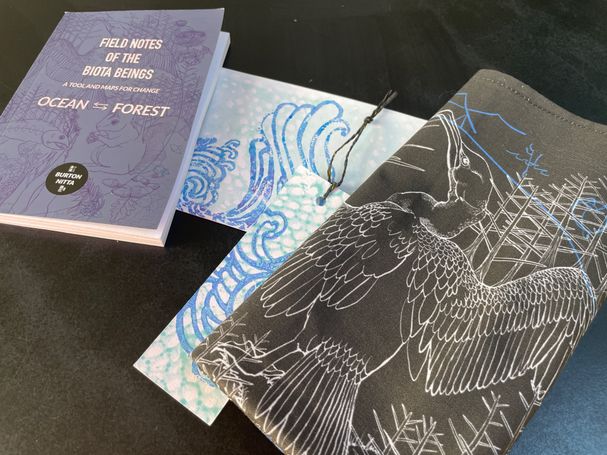15
APRIL
2024
IN BETWEEN
In Between researches the interconnections between human and the non-human, to encounter: ecological intelligence and other forms of intelligence; elements that link and bind us; ways the non-human influences how and what we think; and other systems of belief in the environment.

We exist within an interconnected world. Ecologies of natural systems reveal a complexity of interlinking beings and elements.
The interwoven individuals rely on each other for their survival. We often focus on the subjects in the network, whether they be humans, other creatures, plants, trees, microbes, rocks, water, etc. We might overlook the factors that hold these entities together in ecological webs, communities, assemblages, patterns, or systems. What might we discover if we look in the In Between spaces? What might we discover when focusing on the elements, concepts, or others that hold the connections together?
With the realisation and acknowledgement of ecologies, we also discover vital and vibrant phenomena that form in the spaces, systems, communication and flows between the individual elements. These are the spokes between the hubs. They join and assist the connections. They can include the photons, vibrations, electrical charges, chemical scents and frequencies that project from one element to another. The connectors may feature fluid energy flows that weave and intersect these webs of dynamic forces, where organic and inorganic shape each other. Also, these might include signals, pathways, beliefs, or worldviews that create communication, sustenance, structure, support, movement, or interfaces.
Our attention turns to the spaces, mechanisms and interactions between elements. Within these connections, research includes the study of synchronisation of cross species communication, signal pathways, the role of frequencies, patterns, symbols, and animistic beliefs, and creating space for non-human others.
The works heighten our awareness to and access signal pathways within interkingdom consortia, encompassing insects, fungi, plants, and bacteria in the Rhizobia. We explore how humans also intersect and might ‘tune’ into these signals. If we can experience these signals how might our worldview shift?
In reaction, we develop alternative expressions of belief in the environment to find names and ideas that help navigate complexities. With this awareness we can expand ideas of ecological intelligence (Marcy & Johnstone, 2022), alternative frames to live in the environment, and nurture a sense of belonging.
The work builds on our previous project called Biota Beings, available at: www.burtonnitta.co.uk/biotabeings.
Further reading:
* As an Amazon Associate we earn from qualifying purchases.



